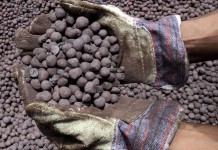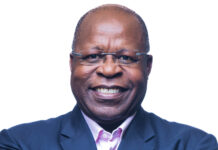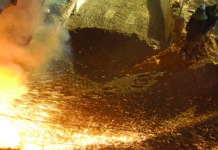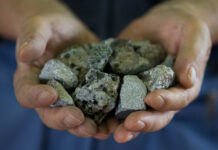
[miningmx.com] — DESPITE well-documented frustrations, the South African mining industry is changing, albeit slowly.
“Serial’ selling of prospecting rights to industry monopolies by groups, which got the rights on BEE considerations, is subsiding. And a new generation of empowerment groups is getting its hands dirty in the practical development and the actual running of mines, a dream the post-apartheid Government has been battling to realise.
Two weeks ago Minister of Mineral Resources Susan Shabangu conducted the official launch of Kudumane Manganese Mine, bringing to four the number of new black-controlled mines in the Kalahari Manganese Field, Northern Cape.
Kudumane is a R1.5bn project spearheaded by two empowerment groups – Dirleton Minerals and Energy and Northern Cape Manganese Company.
Hong Kong-based Asia Minerals Ltd is the technical and financial partner of the project.
The operation will consist of a combination of open pits and underground mining, with plans to initially ship 1.5m tonnes of manganese ore a year, via the Port Elizabeth harbour, then 2.5 million tonnes a year.
In March, Shabangu conducted the final shaft blast of Kalagadi Manganese, a R7bn project led by Kalahari Resources (a broad-based consortium led by black women and black mining professionals), and backed by the Industrial Development Corporation (IDC) and steel giant ArcelorMittal.
Kalagadi is simultaneously developing a sinter plant and will later this year construct a R4bn smelter plant in Coega in the Eastern Cape.
The mine is expected to start production in the last week of October and will thereafter prepare to list on the JSE in early 2013 if market conditions support the plan.
Shabangu says these projects are some of the few that meet Government’s objectives.
But most importantly, she says, they’re an indication that the industry is changing.
Black people are not only seeking meaningful participation, but also want to ship finished or beneficiated products to the international market.
Transformation in the mining industry remains a thorny issue in SA. Government set a target of 26% black ownership by 2014, but there’s a dispute on whether that’s attainable or not.
The industry says it has surpassed the mark, but Government disagrees. First-generation BEE miners have also frustrated the transformation agenda in the sector.
When they did not sell their mining rights back to established mining conglomerates, they were found to have been willing participants in notorious fronting schemes.
The Kalahari Manganese Field, situated in the poverty-stricken Hotazel-Kuruman area, is home to 80% of the world’s manganese reserves. However, SA produces less than 25% of the world’s output due to a lack of infrastructure such as roads, rail and electricity.
Manganese is used in the making of steel, and the demand has been surging in Asian countries.
The other two manganese projects currently under way in this area are the Tshipi Borwa open cast development by Tshipi e Ntle Manganese Mining. The other is United Manganese of Kalahari, a joint venture between BEE group Majestic Silver Trading and Russian company Renova Manganese Investment.
Daphne Mashile-Nkosi, executive chairperson of Kalagadi, says if successful, the new mines could become a prototype for future black miners.
However, funding remains an issue.
Developing a mine takes years, and black entrepreneurs often struggle to keep afloat while waiting for production to start.
Mashile-Nkosi is critical of State funders, which she says should be playing a leading role in developing black miners.
She says: “Funding will remain a challenge for as long as you have the IDC which operates as a commercial bank.’
She says the Public Investment Corporation, which manages the Government employees’ pension fund and has a large portfolio of investments in listed blue-chip companies, is also not showing an appetite for investing in greenfields mining projects.
– Finweek











